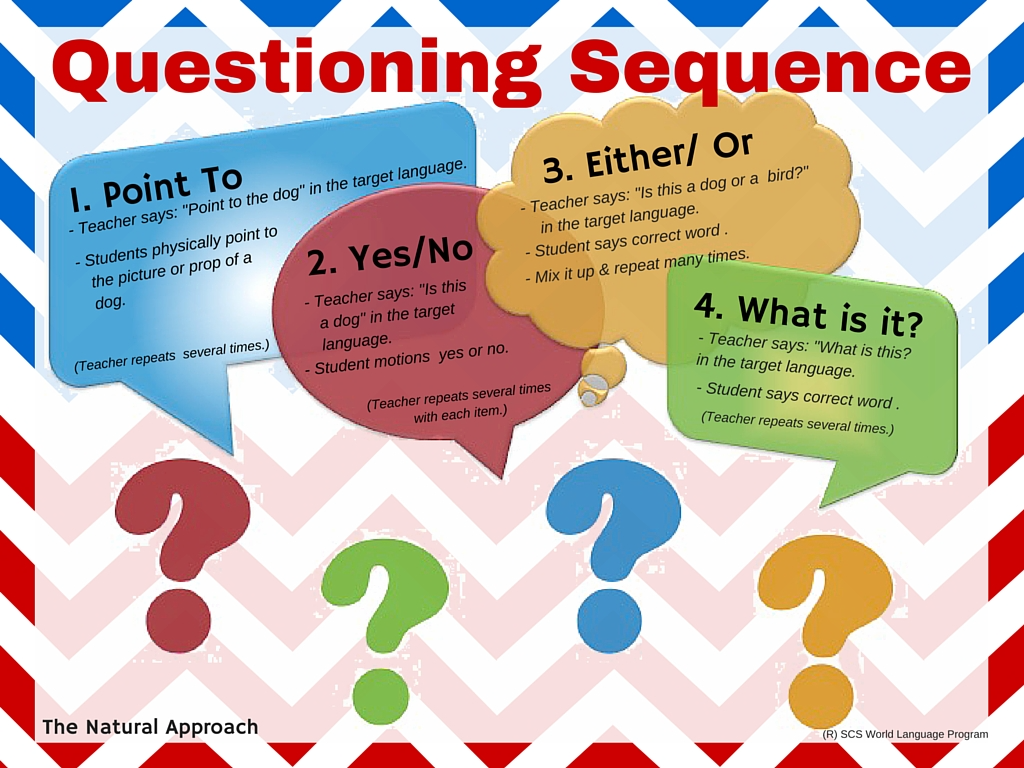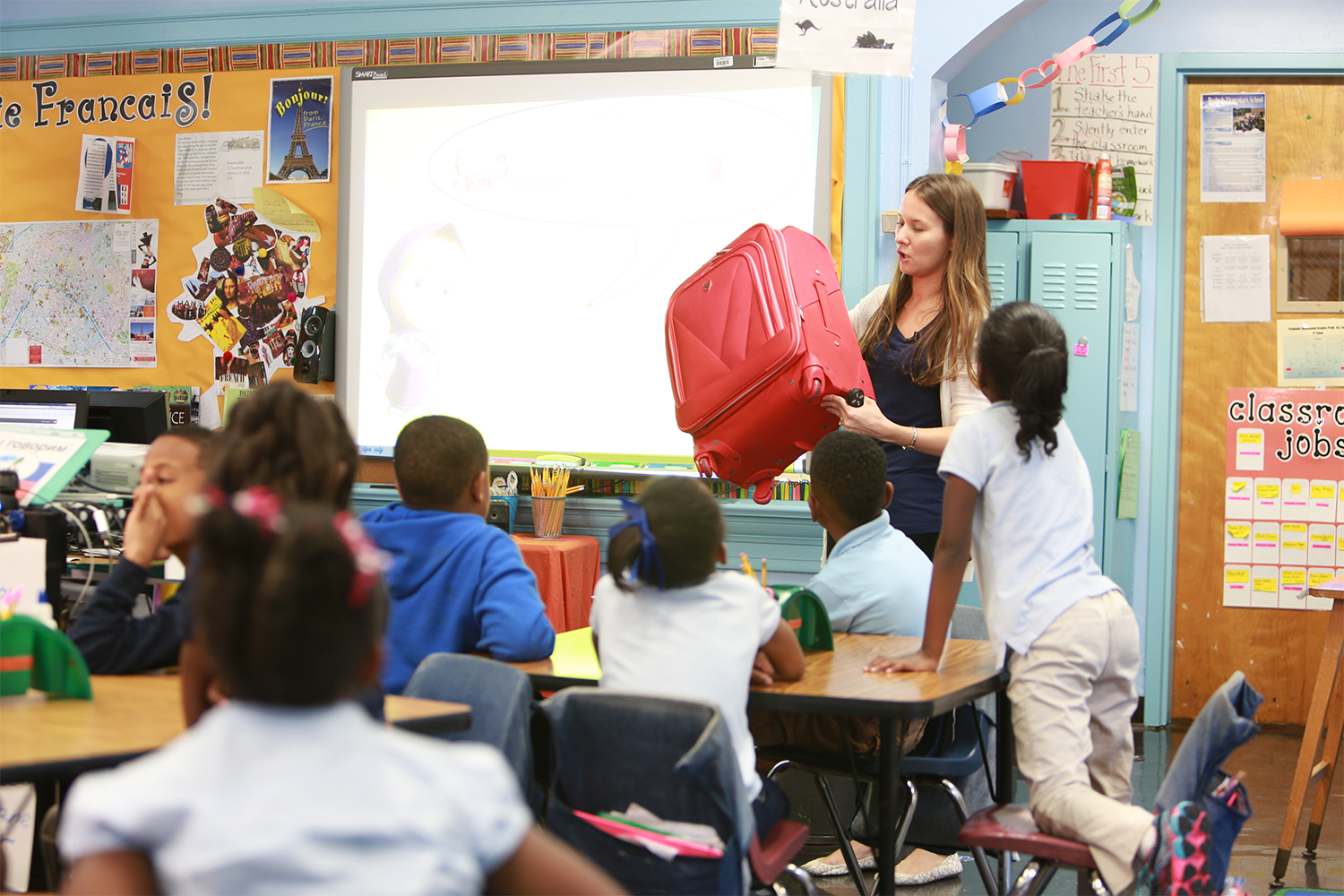Getting started is often the hardest part in a unit, heck in anything new! We are often unsure how to take that first step and in our classrooms when introducing language chunks or vocabulary, how do we do that while staying in the target language and NOT translating. Language learning requires attention and practice, asking students to translate not only adds a step to the process but it lets the students know they can ignore us in the target language because we will tell them what we want them to know in the long run. Why work to pay attention and keep up if I can just wait for my teacher to tell me what it all means? One of the most common responses I get to this notion is “ok I get that, but what DO I do?”. Valid question because input often feels like a daunting task and while I wish there was a secret formula that I could give you to make all of your students proficient, there is not one. It is important to know strategies for approaching vocabulary development without relying on translation because every class is different and the needs of learners in your rooms will vary. One concrete strategy that helps students interact with new vocabulary is the Natural Approach and the idea of circling questions.
The Natural Approach
Krashen and Terrell outline strategies for providing comprehensible input and promoting language acquisition in their book The Natural Approach (1983, 1996). Curtain and Dahlberg describe “in the ‘natural approach’, students learn new vocabulary through experiences and associations with the words in extended comprehensible input experiences that include visuals and gestures, physical response activities, and a scaffolded series of means for choice-making questions” (Languages and Learners p.110). The goal of this approach is to help students connect new language to their meaning via a meaningful experience supported with visuals, gestures, and maybe even physical contact. Providing a mental image for students allows them to engage in the task of understanding the new language without the added work of translating. This process engages students in four levels of interaction with the language.
Stage One
The first stage asks students to identify what is being said in the target language simply by pointing. Using visuals that are colorful and visible enough to be seen from anywhere in the room, introduce each word by sharing a visual while saying the word in the target language. Students can repeat the word as well. Once you have gone through the words a couple of times mix up the visuals and follow the same process of saying the words and allowing students to repeat.
Next hand the visuals to various students around the room and ask them to hold them up. In random order ask students to point or show you the word. If we were introducing activities that students may like to do, I could have five images of different activities. Let’s say they are ‘to dance’, ‘to play soccer’, ‘to play video games’, and ‘to sing’. As you practice this group of vocabulary you would ask students to point to the student holding the card of the image ‘to dance’. After students point, you point to the correct card. Repeat with ‘to play soccer’. Ask students to ‘show you to play soccer’. Then you confirm correct answers ‘yes to play soccer’ while pointing to the appropriate cards. Continue through the cards in random order until all students can point to the correct card with the correct prompt.
Stage Two
Once all of the students can point to the correct visual to describe the target language word or phrase they hear, you shift to asking Yes or No questions. Continuing our previous scenario, you would point to the card illustrating ‘to dance’ and say ‘is this to dance’? Students can use thumbs up for yes and thumbs down for no. Or you may have yes and no cards prepared so students can hold up the card of their choice to indicate their answer. Be sure to mix it up by pointing to the illustration of ‘to play soccer’ and asking ‘is this to dance?’. Continue through these examples in a random pattern until all students can correctly answer.
Stage Three
The next step is forced choice. A student stands or holds up a visual. You ask in the target language “Is this ‘to dance’ or ‘to sing’?”. Students reply by saying the correct word in the target language. Repeat this many times until your students can correctly identify the vocabulary word identified in each forced choice.
Stage Four
Finally, many of your students will be ready for some output. Holding up or projecting a picture, ask students in the target language “what is this?”. Students reply with the correct target language vocabulary word. Repeat several times to provide practice. Students can then work in pairs to quiz one another as well for additional practice.
The strong correlation to the visual with the auditory input allows students to internalize the new vocabulary in the target language without translation. Helping students develop a concrete conceptual understanding of the word meaning is essential in the language acquisition process. A large part of the process relies heavily on concrete referents. At every stage concrete referents provide the context for which students acquire the language.
Concrete Referents
Big words for an easy concept. It is important that we carefully consider the language we select to teach students. First and foremost, is the language as concrete as possible? For example, a teacher wanted to teach the word ‘home’ to students. These were novice language learners who had little language. After a discussion we agreed on using the word ‘house’. ‘House’ is a word that we can represent with visuals and actions. In this day and age, students are so visually connected thanks to technology so the more explicit we can make our input the better. Considering the following questions when considering will help you will choose what to select.
- When teaching the vocabulary can you bring in props or large, colorful visuals?
- Can you act it out or use gestures or body language to express it?
Honestly the more of these items you build into the lesson the better for students. After introducing words with their visual representations, a nice follow up is to give students words and have them draw the meaning on a whiteboard. As you decide what words you will teach be sure to have clear visuals to represent what you are teaching. Some teachers even have students create their own picture dictionaries with new vocabulary and student selected or drawn visuals to represent their meaning.
These references need to be clear and concise. Thy also need to be colorful and large enough to be seen from the desired perspective. Obviously, visual will be smaller for a student created dictionary than it will be for a whole class activity. Many teachers may also use a projector in class and that is great, but be sure to vary the types of concrete referents you use to keep student interest.
The beauty of this approach is that it can be used over and over with new vocabulary with much success. It provides a clear and scaffolded approach to vocabulary acquisition. It can be used at any level with the same success. Finally it takes the guesswork out of how to scaffold the new vocabulary in a meaningful way. Post the following visual where you can see it so you have a visual prompt during instruction, there is no harm in help! After a few tries however, I think you will find just how easy and comfortable this approach becomes and the student success will hopefully motivate you to make this a permanent player in your instruction!

